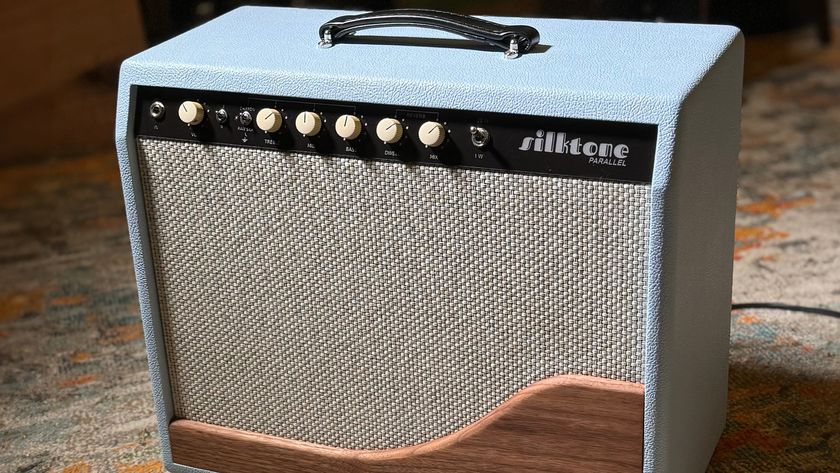In search for the perfect melody with Rolling Blackouts Coastal Fever’s Joe White and Frank Keaney
The Melbourne-based indie-rockers’ Endless Rooms is a quietly epic record of spiritual uplift, existential angst and world-building songs, and it is constructed by three very different guitarists working in unison, chasing ideas as far as they’ll go
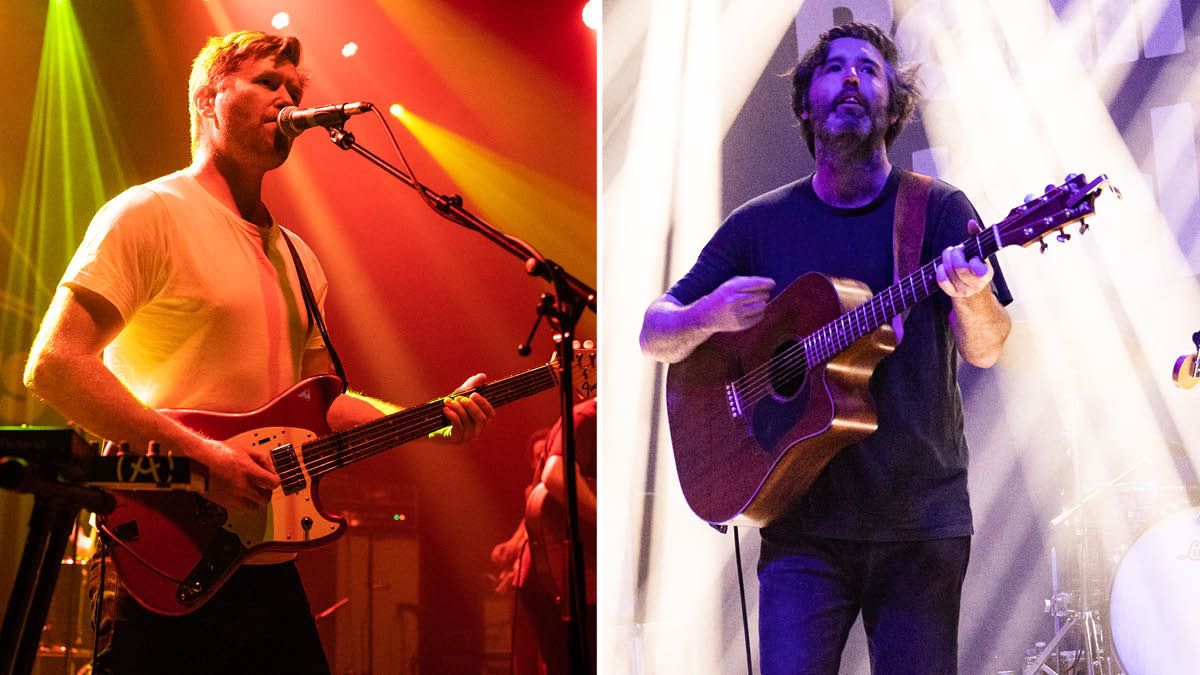
One of the greatest gifts a space that you the listener can enter an artist can give their audience is a world to get lost in for a while. It can offer pure escape, or a different perspective, just so long as this painting, book, movie, song, whatever, takes you some place else to see the world or yourself anew.
The 21st‐century is forever framed as 360-degree assault on our attention, and isn’t it just. But, more importantly, what is that doing to our imagination? When you come across a record like Endless Rooms, the third album from the Melbourne-based indie rock quintet Rolling Blackouts Coastal Fever, it’s like a spa day for the grey matter.
Even the cover, a photo of the lakeside cottage where they demoed the album, bright gold of the illuminated interiors framed by obsidian nothingness of the night sky, invites a daydream. There will be more to come.
Rolling Blackouts Coastal Fever’s sound is constructed of a three-way-guitar conversation conducted between Frank Keaney, Joe White and Tom Russo. All share vocal duties, too. You’ll find Keaney on a Maton cutaway dreadnought acoustic, nicknamed G-Train after Aussie rules footie hero Fraser Gehrig.
“Particularly when we started off we had lots of songs in open G, and this was just this chugger, the G-Train,” Frank laughs. “I love it. I’ve got another one which I call Madame Butterfly, which is named after an Australian Olympic swimmer from the 90s [Susie O’Neill] and is still very muscular but with a little more class.”
Joe White prefers Fender electrics – Telecasters, Mustangs, Jags – with Tom Russo typically playing a late-50s Gretsch Black Falcon. The three guitarists have very different but complementary styles, and those dynamics of difference stretch out to give songs such as Tidal River, My Echo and Dive Deep a three-dimensional quality, a space that you the listener can enter and inhabit. This sound tells the band what the song needs, what they’ll be singing about today.
Watching movies I am able to sort of transport myself somewhere, and I do that with my songs as well
Frank Keaney
“I feel like most of our songs are driven by the music,” Frank says. “And then you are just trying to diagnose what world that lives in. Sometimes you are taken somewhere by a melody, or by the dynamic interplay between the instrumentation, the tones, and you situate it somewhere in your head and then you start to concoct this scene or world in which it lives.”
Get The Pick Newsletter
All the latest guitar news, interviews, lessons, reviews, deals and more, direct to your inbox!
Some of the influences brought to bear on the Rolling Blackouts Coastal Fever sound can be found not too far from the surface – the 90s US indie-rock canon, the Go-Betweens, the hypnotic clang of Echo And The Bunnymen – while others are buried deeper, occasionally referenced in the lyrics.
Frank recently cited New Order as an inspiration for holding agony and ecstasy in equilibrium and a similar tension exists in much of RBCF’s writing, gracing tracks like the propulsive and danceable Saw You On The Eastern Beach with a bittersweet aftertaste. But he has also mentioned French New Wave director Eric Rohmer’s 1986 film The Green Ray as a key influence.
Following Marie Rivière’s Delphine into a shapeless summer (it was released in the US as Summer) of unsatisfactory relationships, the film seesaws between boredom and promise. Through the fug of Delphine’s ennui, it is as though the metaphysical phenomena of the green ray – a flash witnessed at the last gasp of sunset – is lying in wait, pulling the film forward. It is a big mood, the kind that Frank Keaney loves.
“When I am watching a movie I am really trying to wring the juice of this world that it lives in, and I try to make connections with other worlds and try to curate this universe,” he says.
“If I am watching something, I don’t really care for storylines that much. I just try to find these worlds. I really like those Rohmer films for that. I am able to sort of transport myself somewhere, and I do that with my songs as well.”
RBCF’s songwriting has guile. There’s craftiness in their use of krautrock’s forward motion, chasing down chord progressions that pull you in like quicksand. On occasion the melody is carried by Joe Russo’s bass guitar, with guitar as texture.
As much as some of the guitar noise pulls focus – that intoxicating contrast between White’s honeyed indie Americana and Russo’s skronk and chime is hard to ignore – the melodies are box office, planting hooks that last for days.
Tom and I are very different players... We have definitely consciously tried to complement each other in that way
Joe White
“That’s what really fires us up,” Frank says, “because when we hit a point of progression and a melody and then start peeling melody and melody on the same structure, we find this thing like we are looking for the impossible waterfall. I think it is actually a staircase, a [Maurits Cornelis] Escher thing.
“We try to find this progression that you never want to get off, that just keeps having this perpetual motion. While in some ways we are a verse/chorus pop band, underneath the things that we are looking for are those sorts of perpetual motion machines.”
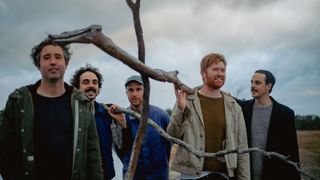
Joe White adds: “Sometimes it’s rhythm and chords that just feel good. But inevitably we are searching for that perfect melody to go with it.”
The pop sensibility gives RBCF all kinds of permission to go nuts and experiment with electric guitar sounds. On the song Tidal River, they build and build, pushed into the sort of trebly fever you might have heard after hours in the Television practice space with Richard Lloyd and Tom Verlaine going at it.
It’s a moment that makes their guitars almost non-western in a musical sense and it tells us a lot about how these three guitarists and their individual styles pull the RBCF sound in different directions.
“That is Tom hitting the guitar real hard!” laughs Joe. “Yeah, that was something that we were querying, if that kind of weirdness should be there. But more and more we were building that song, and it just seemed to live in that Midnight Oil, crazy 1980s world where you could do whatever you wanted. So we leant into that, turned up the gain on his track and added a bit of extra skronk just to really dial it in.
The tone on Dive Deep is mostly due to that being an extremely short delay with the mix turned all the way up
Joe White
“It helps to have the guitar on the other half of the song doing the sweeter melodies. But he really goes hard on that. Actually, he goes hard on most of these songs. He is always digging in pretty hard. Tom and I are very different players. He works with a lot more scratchy, spiky attack. He hits the guitar pretty hard and I tend to lean on a few more effects like delay, reverb, and things like that just to bring more spacial width to the sound. We have definitely consciously tried to complement each other in that way.”
This tactic has been priced in since the beginning. There was Russo, hitting a refurbed vintage Gretsch hard. White was on the Fenders. And it serves RBCF well in the present day, with Russo preferring the chime and sparkle of an AC15, White running a wet/dry rig of a Fender Blues Junior and Sovtek head.
There were some delay and chorus pedal discoveries that shaped the tones on Endless Rooms. There’s an EarthQuaker Devices Disaster Transport modulated delay on Blue Eye Lake and Vanishing Dots. An MXR Carbon Copy analogue delay did most of the heavy lifting.
“The tone on Dive Deep is mostly due to that being an extremely short delay with the mix turned all the way up,” Joe says. “It turns it into this weird neon sort of sound. That was quite simple in the end – a really quick delay – but it just made it sound out of this world.”
The album is basically a bottled version of that time when we were able to finally link up agaiN
Frank Keaney
The house where they demoed the tracks with engineer Matt Duffy helped find the sounds too. With a front that was all windows and a mezzanine floor, the acoustics were bright and lively. Marcel Tussie’s snare drum sounded epic. Joe used ceiling mics in search of a wider sound.
“Songs like Vanishing Dots and Blue Eye Lake and Tidal River, they’ve got some big, wide, expansive sounds on them that were certainly a result of the house we were recording in,” he says.
It was only a two-hour drive out of Melbourne but this snatched moment of normality between lockdowns was a tonic, impossible to disguise in the music.
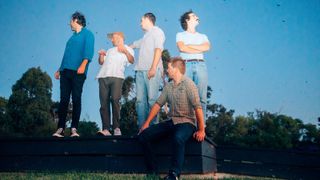
“It was just excitement, this explosive explosion!” says Frank. “We were jumping out of their skin to be making music again. The album is basically a bottled version of that time when we were able to finally link up again.”
RBCF leave Endless Rooms open to interpretation. Even when the melodies are putting on a happy face, there’s the suggestion that something troubling is just over the horizon.
There was a pandemic when this was written, ecological disasters, bushfires – the Great Barrier Reef is dying. That existential subtext is there if you look for it, tunneling into the ecstasy from the early demo sessions. Which grabs the imagination first is down to you...
- Endless Rooms is out now on Sub Pop.
Jonathan Horsley has been writing about guitars since 2005, playing them since 1990, and regularly contributes to publications including Guitar World, MusicRadar and Total Guitar. He uses Jazz III nylon picks, 10s during the week, 9s at the weekend, and shamefully still struggles with rhythm figure one of Van Halen’s Panama.
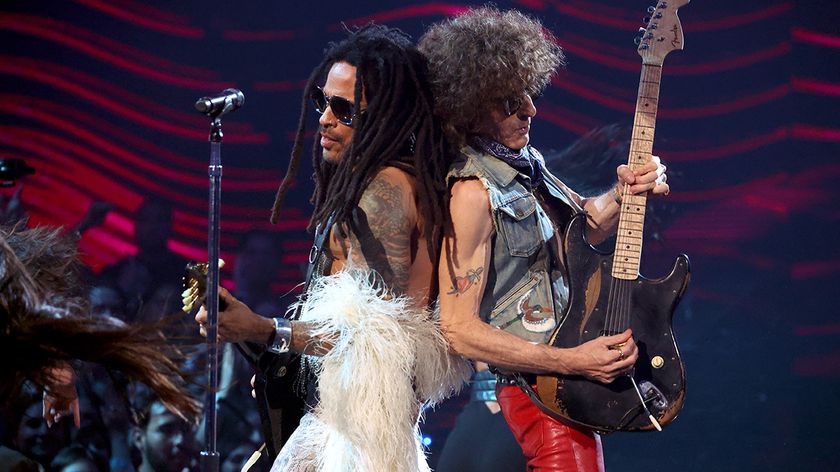
“We had 15 minutes left, and it was time to go… I just started playing that riff. Then Lenny goes, ‘Whoa, what’s that?’” Lenny Kravitz guitarist Craig Ross reveals the serendipitous roots of a Kravitz classic

“The concept of the guitar duel at the end was just appalling”: Crossroads is an essential piece of '80s guitar lore, but not every guitar legend was a fan of the film








